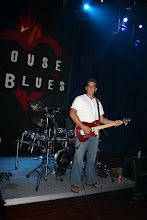Talk about an absence of peer review. The witness list bespoke a pure, unadulterated motive to flog the trial lawyer theory that Toyota is concealing a mysterious, unreplicable electronic flaw that causes its cars to accelerate uncontrollably. Aside from Toyota executives and the ineffable Ray LaHood, the hearing panels consisted of self-appointed Washington safety lobbyists with a long history of serving trial lawyer interests, plus an Illinois professor who, in the great tradition of "60 Minutes" and "Dateline NBC," found a way to sabotage a Toyota by disabling an electronic cross-check that's supposed to stop it from accelerating out of control (which is still not the same as causing it to accelerate out of control).
Even grosser was the inclusion of Rhonda and Eddie Smith, who told a tall tale about their runaway Lexus that must have had the staffers who arranged their appearance laughing up their sleeves.
Ms. Smith described a car that kept accelerating to over 100 mph as she stood on the brake, shifted into neutral, even shifted into reverse. Her detailed narrative became absent of detail only on one crucial point: How her harrowing ride came to an end. "After six miles, God intervened. As the car came very slowly to a stop, I pulled it to the left median."
Perhaps the Almighty gently lifted Ms. Smith's foot off the gas (or disentangled it from an improperly fitted floor mat) and dispelled from her head the illusion that she had ever shifted the car out of drive.
Henry Waxman set the stage for the narrative, designed to benefit those suing Toyota, by insisting that his selected panel of witnesses would deliver compelling evidence that "Toyota vehicles have a serious flaw in their electronic control systems that leaves them vulnerable to sudden unintended acceleration."
If any were in doubt, Rep. Paul Kanjorski used his questions to launch a diatribe against tort reform, whose purpose he suggested was to "just forgive these companies and let them kill our people."
Sean Kane, the doyen of trial lawyer-friendly Safety Research & Strategies Inc., was the sole participant who went out of his way to mention driver error—but only to dismiss the possibility, along with a 1989 National Highway Traffic Safety Administration study that named "pedal misapplication" as a leading cause of unintended acceleration accidents.
His argument: Because vehicle technology has changed so much due to electronics, the study is no longer valid. Huh? The one thing that hasn't changed is that the system, however it works, still is designed to interpret a foot on the gas as instruction to "Go."
This kabuki was obviously designed to exploit what Congress knew would be Toyota's reluctance to blame its customers, though Toyota USA President Jim Lentz did inject the term "pedal misapplication," quickly adding, "We are not here blaming customers, but it does take place."
One witness was present who had an unambiguous professional and institutional duty to speak candidly about the role of driver error. But Mr. LaHood, the nation's transportation secretary, was clearly more concerned with displaying his person to political advantage than advancing a search for truth.
Nobody can or would rule out the possibility of an electronic bug or electronic interference, but Toyota cannot say it has found a defect when it hasn't. And funny how a media that never shrinks from assigning "pilot error" as the cause of deadly plane crashes resists acknowledging that amateurs behind the wheel might be a cause of runaway car crashes.
Auto companies don't implement technology for the fun of it. Electronics have taken over at the behest of emissions regulators, not customers. Even so, the obsession with Toyota's drive-by-wire gas pedal is misplaced, since the driver's foot in every car nowadays is connected to a computer. And drive-by-wire will soon become standard because an analog component merely complicates the job of adding refinement to traction control, stability control and gear-shifting.
Unintended acceleration crashes are rare, but they're not freaky. Most kinds of accidents are caused by driver error rather than equipment failure or defect. And even with the industry's forced diversion of investment dollars to fuel economy, car makers are steadily bringing forth technology to save drivers from themselves.
Devices are now available to warn motorists when they're drifting out of lane, taking their eyes off the road, or when another vehicle is in their blind spot. Some cars will even cut engine power, apply the brakes and prime the airbags when a collision is imminent because, say, a driver has mistakenly stomped the gas instead of the brake.





No comments:
Post a Comment